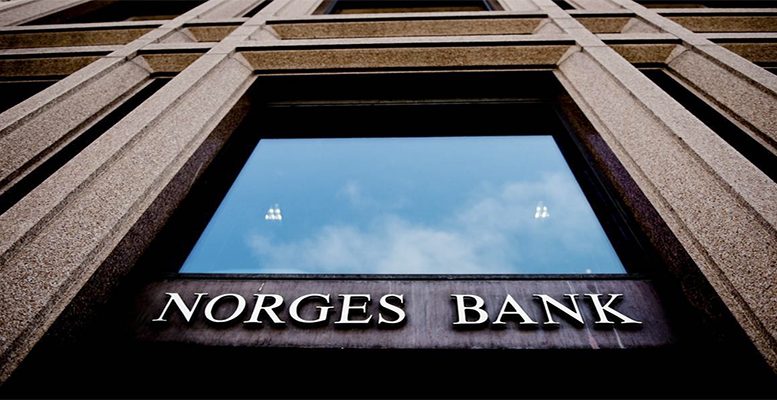Sovereign funds have invested 28.3 billion euros in Spanish companies in the period 2011-2016. Norway’s sovereign fund GPFG alone closed last year with a portfolio of over 12 billion euros in Spain, with shares in 75 companies and over 3.5 billion euros in government debt. The Arab countries and international firms are the most active,while the infrastructure – including property and hotels – and energy sectors are the main protagonists in this investment drive.
“Spain is on the sovereign funds’ radar, to the surprise of our Anglosaxon colleagues. This was something unthinkable when we started doing this report six years ago,” said Javier Santiso, chairman of the Sovereign Wealth Lab of the Instituto de Empresa (IE) during the presentation of the report “Sovereign Wealth Fund 2016”.
The report affirmed that the sovereign wealth funds are in a period of strong expansion. Currently there are 94 funds of this kind operating across the globe – with another 28 about to step on to the podium – with combined assets under management of 7.2 billion dollars.
The report assures that the sovereign funds’ investment in Spain in 2011-2015 “helps to explain how the economy has developed over the last five years, coming out of a prolonged crisis towards the current recovery of growth. The funds’ strategy in Spain was anti-cyclical when the economy was in its worst phase and they have continued to build up their presence since then, adding a growing number of sectors to their investment portfolios.”
So, in 2011, Spain was at the top of list for investors in Europe – ahead of France, the UK or Germany – thanks to operations like the purchase of Cepsa by Abu Dhabi’s IPIC.
Then the recovery of the Spanish economy in 2014 meant that during that year and the following one there were investments totalling 4.6 billion euros. The hotel and property sectors were the the preferred ones – for example, GIC invested in GMP and Quia in Colonial.
According to the report, direct investment in Spanish companies by the sovereign funds totalled 28.3 billion euros, excluding debt, in the period from 2009 to the first half of 2016. That said, it’s difficult to establish with any real certainty how much was invested in our country. Javier Capapé, analyst at the IE’s Sovereign Wealth Lab, points out that the funds use many different ways of investing which are complicated to identify, sometimes participating in purchases along with other operators. Or, for example, “via stakes in global private equity funds or specialised funds and the like.”
With regard to the sovereign funds’ investment in 2016, Capapé has estimated this at 11.446 billion euros. But this includes only 12 individual operations worth 2.823 billion euros, over, plus the value of the equity portfolios of two funds in particular: that of Norway – 8.446 billion euros – and of the rich oil state of Alaska – 177 million euros. “It’s a minimum amount and, thereafter, there is more,” he said.
Although it’s difficult to estimate the specific amount invested, there are trends which are more identifiable. In the last five years, the sovereign funds have multiplied their presence in Spain. There are the funds with a greater investment tradition – like those from Singapore, the United Arab Emirates (UAE), Qatar or, especially, Norway – which have now been joined by funds from Kuwait, Oman, Bahrain and China. The sectors attracting investment have also diversified and now mainly consist of energy, finance, infrastructure and property – particularly hotels – without forgetting debt instruments.
Each sectorial investment has its own strategic reason, according to Capapé. “In the case of the acquisition of emblematic hotels – trophy assets – the goal is to build a reputation, since the transactions provide visibility for the state or country where the purchase are made. And they also provide access to the establishment. The same happens in the case of investments in the big football clubs like Barcelona, Real Madrid or Atlético de Madrid.
The property sector is the one which is most valued “in times of crisis, when valuations are low. The top funds can allow themselves the luxury of investing with a 15-20 year horizon, obtaining recurrent revenues linked to inflation and protecting themselves in this way against the decline in value of the property,” the analyst says.
Norway’s sovereign fund –Norwegian Government Pension Global Fund (GPFG)- deserves a special mention. It is a regular major investor in Spain. According to Capapé’s calculations, its investment position in our country stood at over 12 billion euros at end-2016. Of this total, 8.446 billion was invested in equities – with a presence in 75 listed companies – and another 3.737 billion in debt instruments of the Kingdom of Spain. “They invest in the bigger firms, with small percentages – between 0.9% and 1.5% – although they do have bigger stakes in some paper companies,” says Capapé. As far as Spanish debt goes, GPFG is a real expert. From a position of 945 million dollars in 2012, it jumped to 4.617 billion one year later, and has continued to bet strongly on this asset. “It’s noticeable that they are opportunists, taking on and unwinding debt positions a lot.”





